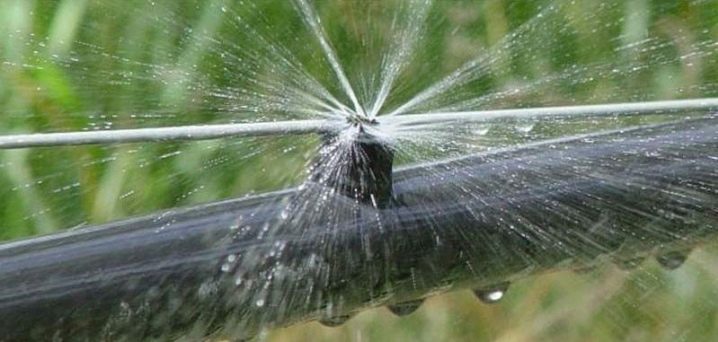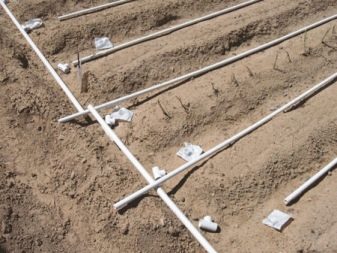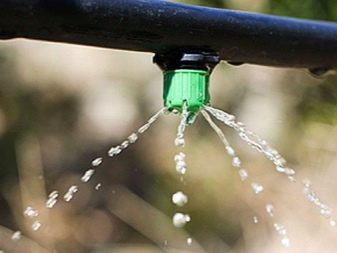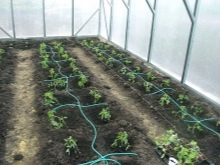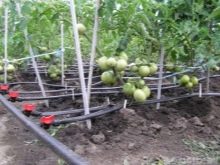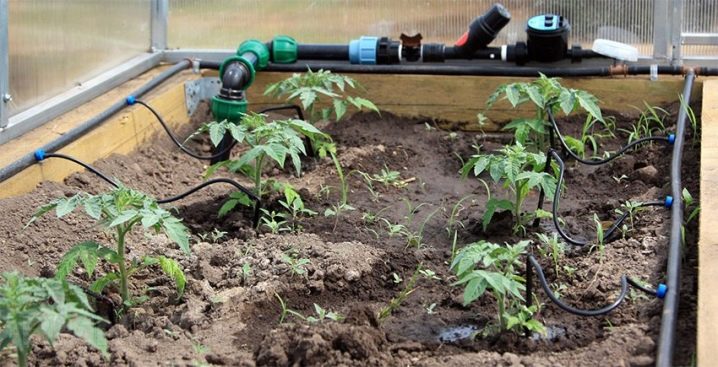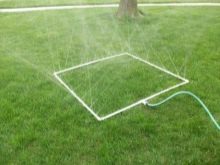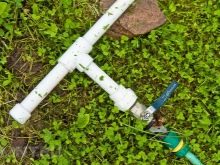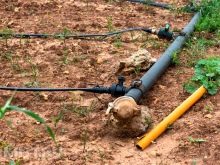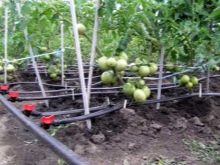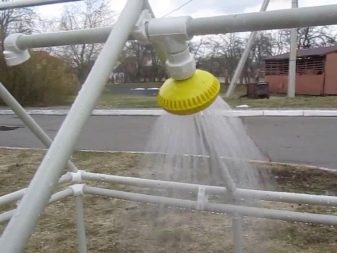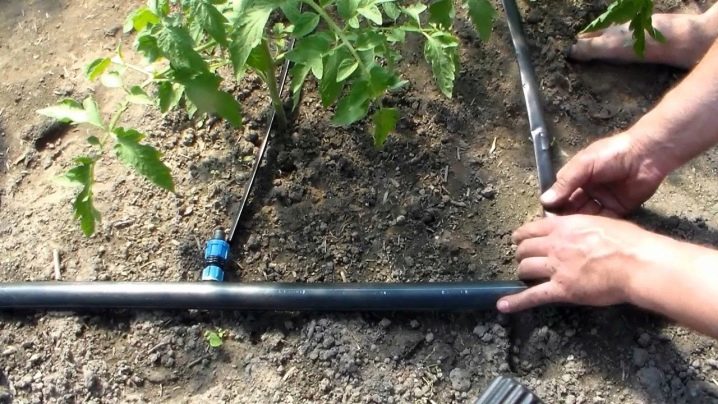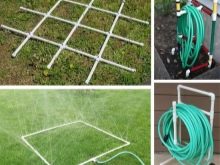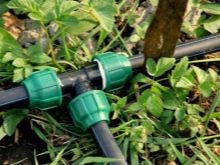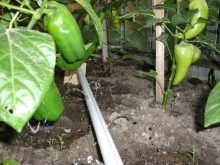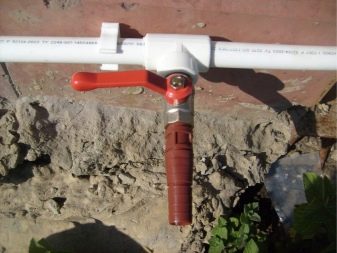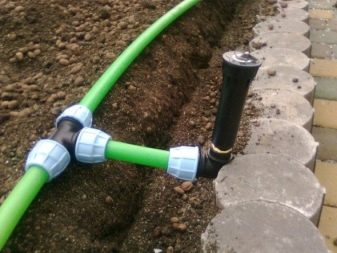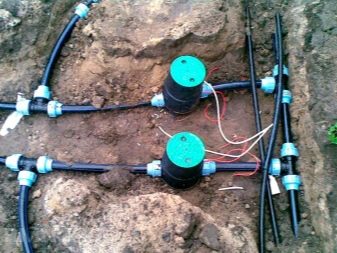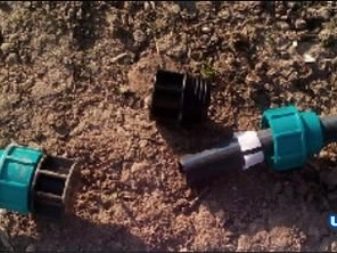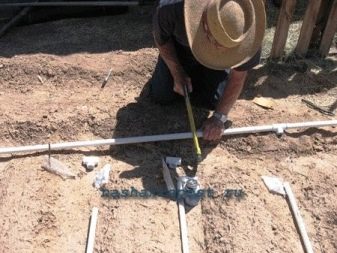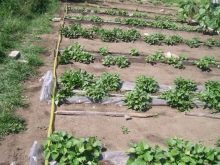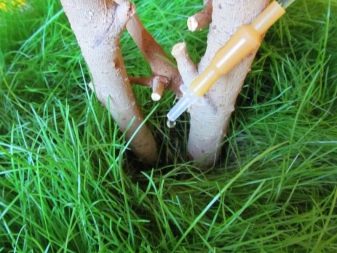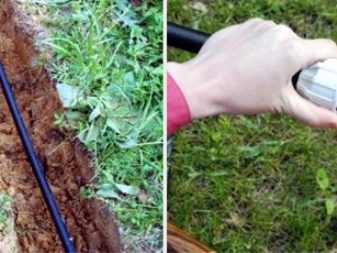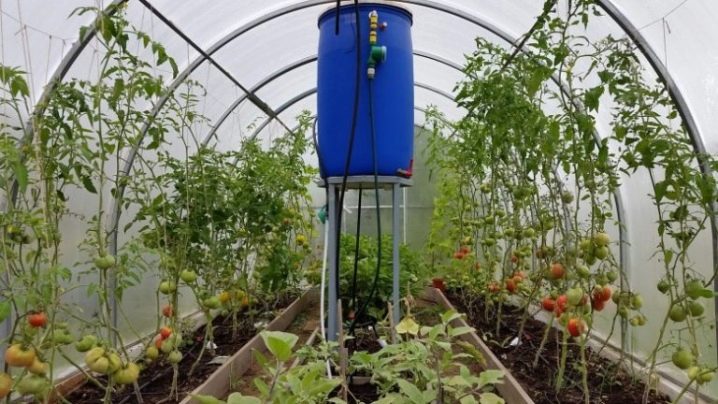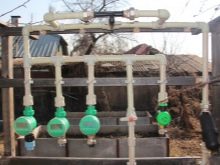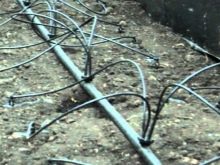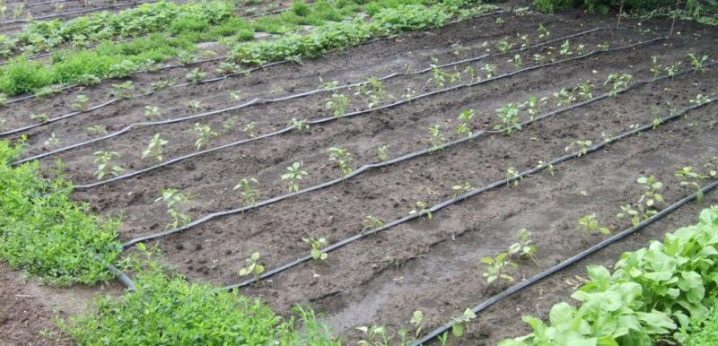How to organize a drip irrigation system of polypropylene pipes?
In order to grow a good harvest, it is important to ensure the plants timely and sufficient watering. Not all gardeners have the opportunity to visit the site very often or stay in the country all the time. And many cultures need almost daily irrigation. A good and convenient solution can be the organization of an automatic irrigation and irrigation system at a site. The article will discuss how to make an automatic irrigation system for beds or a system with manual regulation using polypropylene pipes.
Special features
For regular supply of moisture to the root system of plants, you can use drip irrigation.Its specificity is that the water in the soil is fed in small portions, almost drops.
This technology of irrigation of various crops was first tested in Israel. Then this positive experience was adopted in many countries of the world. This method is available for use both in the dacha and household plots of a small area, as well as in agricultural enterprises with extensive planting areas.
In stores you can find ready-made drip systems. They are sold unassembled and are supplied with instructions for assembly and operation. However, many can scare away the considerable price of such finished irrigated structures.
A similar irrigation system can be assembled on its own using propylene pipes.
Making your own construction will save you money. Moreover, which is important, in this case it is much easier to give it the desired configuration in accordance with the features and layout of the site.
Equipment
Drip irrigation systems may vary in complexity. The set of the simplest irrigation construction includes two main components: large highways for water supply and distribution, smaller main lines (outlets) through which drip irrigation takes place.
The irrigation system is connected to the water supply system (if available), storage tank or pumping station.
Advantages of drip irrigation:
- The soil is moistened directly under the roots of the plants.
- There is no waterlogging or waterlogging of the soil between the beds.
- Due to the point of water supply, the number of undesirable weeds in any garden decreases. Outside plants simply do not have enough moisture, and they cease to actively develop.
- When watering in the traditional way from the watering can on the soil surface over time a dense crust forms. It prevents the normal supply of oxygen to the roots of plants. In the case of drip irrigation, the soil on the surface remains loose.
- As a very important advantage, it should be noted very economical water consumption. Depending on the type of soil, the configuration of the system itself, the type of irrigated plants and climate features, water costs can be reduced by 20-80%. However, such savings do not occur at all due to the deprivation of plants of the required amount of moisture. The soil will always be evenly and sufficiently moist.
- With the help of an irrigation structure, it is possible to more effectively feed crops.It is enough to dissolve the necessary amount of fertilizers in the tank from which water is taken. Top dressing will be delivered directly to the roots of plants.
- The root system of plants with drip irrigation develops much more intensively, forming a large number of active branches. This accelerates the process of ripening the crop, and its number increases significantly. The plants themselves acquire resistance to diseases and many pests that often infect weakened crops.
- In hot weather in the scorching sun it is very important that the leaves of the plants remain dry. Even from the school course of biology, we know how destructive only one drop of water on a sheet in direct sunlight. Water in this case begins to work like a magnifying glass, concentrating the rays at one point, which leads to thermal damage and even burning of the aerial parts of the plants. In the case of radical irrigation, this is not to be feared, because water flows into the soil without touching the leaves and stems.
- Significantly reduced the complexity of care for agricultural crops.All that will have to be taken care of when using root irrigation is the presence of water in the collection tank and the timely replenishment of its reserves. A very simple procedure is to create irrigation holes or drip taps. It does not take as much time and effort as traditional watering.
- Automation of the drip irrigation system allows you to leave the site for 2-3 days without fear of losing the crop due to drought. It is only important to make sure that there is enough water in the water intake. Very often, residents of the city combine garden care with the main work and are not able to stay on the site permanently.
At the same time, interruptions in irrigation often lead to loss of quality and quantity of the crop or drying of the crops grown. In this case, automatic watering is simply irreplaceable.
disadvantages
The downside of this type of irrigation system is, perhaps, the rather frequent clogging of small branches of the structure. Soil, small particles of rubbish or stone chips can get clogged in the holes of the drip water supply. The problem is easily solved by simple regular cleaning of these holes.
Advantages of polypropylene pipes
It is also worth touching on the positive properties and qualities of the material, which can be used to manufacture a drip irrigation system.
Polypropylene pipes have the following advantages:
- Parts are lightweight, so for the finished design is characterized by a small mass.
- Polypropylene products are fairly inexpensive.
- The assembly of the structure does not require the mandatory involvement of special equipment or specialists. It can be done with your own hands.
- Condensate does not form on polypropylene pipes.
- On the inner walls of such pipes deposits practically do not accumulate. They do not require regular cleaning, resistant to fungal or mold.
- Polypropylene products are very durable. Pipes made of this material have a maximum service life of over 50 years.
Irrigation management
Irrigation of the soil in the beds can be automatic, semi-automatic, or manually controlled.
- The easiest option is manually controlled irrigation system. In this case, the drainage from the tank is carried out by opening the valve or valve.When the soil is saturated with moisture, access of water to irrigation branches is blocked.
- Semi-automatic construction for watering has a slightly more complex device. In this case, the control of the water supply to the general highway is made by manually closing or opening the tap. The system itself produces the distribution in small taps. The degree of pressure and water flow is also automatically adjusted.
- Fully automated process irrigation can be carried out even in the absence of a person at the dacha. The process is monitored using sensors that take readings of changes in atmospheric temperature and humidity in the upper layers of the soil. With the normalization of indicators, the water supply to the main line and branches is stopped. Automatic watering can also be carried out according to a predetermined program, where the frequency, pressure, amount of water consumed are set.
Assembly and installation
For the manufacture of irrigation systems, the most optimal use of polypropylene pipes with a diameter of 20-40 mm. The main pipeline of the irrigation structure is laid out with pipes with a large diameter (50-100 mm), the outlets must be somewhat thinner.
Between the pipes are connected by compression fittings. The implementation of this process does not require the use of tools and is done manually. The joining of pipes of the same diameter is done with a soldering device.
The progress of work with different variants of the location of pipes:
- The irrigation system passing over the soil surface does not require much time for assembly:
- From the tank with water, you must remove the rubber hose of the desired length.
- Next on the site laid out irrigation system required configuration. The branches connected to the main highway are located along the beds with a crop in the root zone of the plants.
- Droppers are mounted in the pipe sections adjacent to the roots. You can also make small holes in the pipes with a thin drill.
The advantage of a simple surface design for irrigation is that it is easy to eliminate possible breakages during operation.
Bends lying on the surface of the soil are much less prone to clogging.
- Depth installation of the pipeline for soil moisture should be considered in more detail, since its assembly and installation is somewhat more complicated:
- Zones are marked on the site in which highways and branches will be laid. According to the pipe layout, ditches are dug. Depending on the diameter of the pipeline in each particular location, the depth of the trenches can be from 30 to 70 cm.
- A rubber hose is discharged from the water tank. Next is the laying of pipes in the trench. Branches crash into the main highway. For better control of irrigation of each plot, each tap can be equipped with an individual valve.
- Holes are made in branches, or droppers are mounted, through which water will flow into the soil.
- If necessary, the design is equipped with sensors and is connected to an automated control system.
Before digging in trenches with laid highways and branches, a test run of water supply should be carried out. In the absence of problems, the trenches with branches are filled with soil.
Tips
So that during installation and operation of the drip irrigation system there are no problems, You should listen to the following recommendations:
- The tank for collecting water from which it will be fed into the system must be located at a certain height.This is necessary to create pressure in the highways and branches. With a small area of the irrigated area, it is enough to set the capacity to a height of 2 meters. This can provide irrigation over an area of 40-50 m2.
When irrigating a large section, you will need to create much higher pressure in the pipes.
An alternative to a high rise of water intake may be to install a pump in the main line.
- So that there are no deformations on the sections of polypropylene pipes, and the sections themselves are smooth, you can use pipe cutters. If the acquisition of such a special tool is not possible, a hacksaw for metal is suitable for cutting pipes. Pipes of small diameter can be cut with a stationery knife.
- Thin-diameter bends can be replaced with drip tape. But such tape is more vulnerable to various damages, including rodents and birds.
- The simplest and best option for full automation of the irrigation system is the installation of a microcomputer. It is mounted in the central highway and controls the irrigation process according to the parameters specified in the program. In such a system, instead of ball valves, solenoid valves are installed,opening and closing the flow of water under computer control.
- The optimal location of the holes or droppers on the outlet for different cultures:
- carrots, onions, garlic - 10cm;
- cucumbers, berries - 20 cm;
- tomatoes, potatoes, eggplants - 30 cm;
- melons and gourds - from 40 to 60 cm.
Design, assembly and installation of irrigation systems for the greenhouse in general is similar to the above-described process of making irrigation construction for an open summer cottage or garden.
On the drip irrigation of PVC pipes for greenhouses with seedlings, see the following video.
